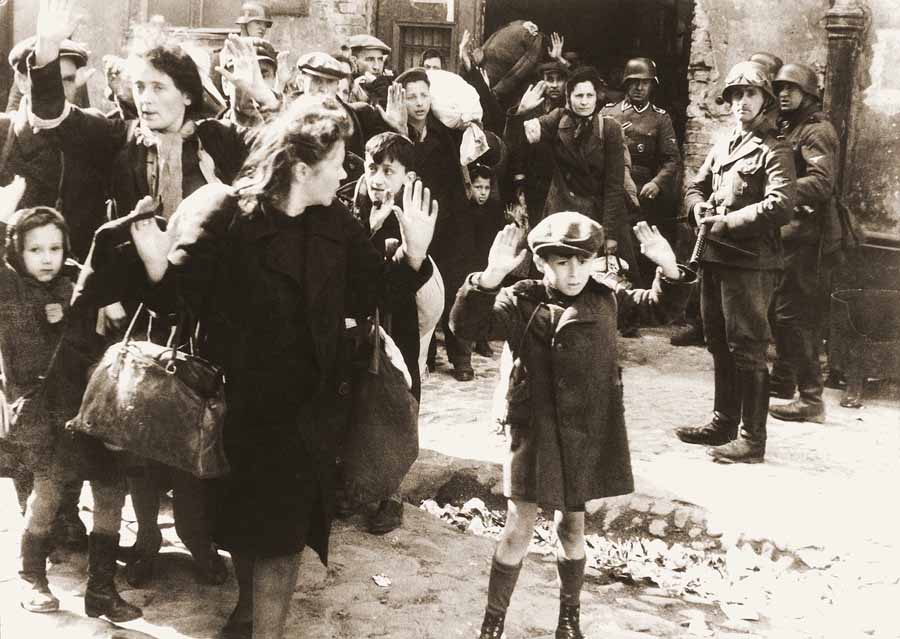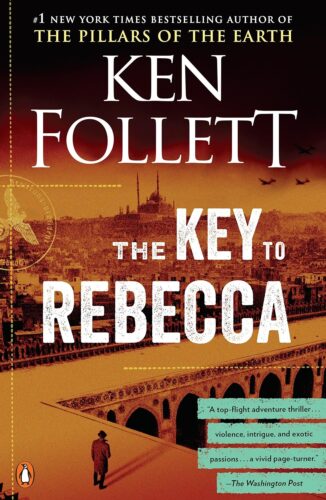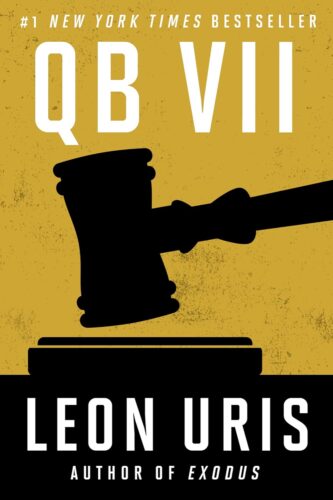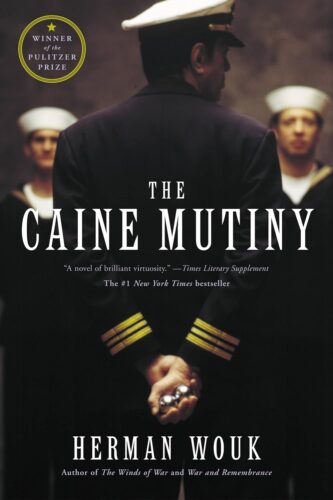In the aftermath of World War II and horror of the Holocaust, the now-forgotten masters of World War II thrillers including Herman Wouk, Ken Follett, and Leon Uris wrote sweeping sagas of lives torn apart by war for an audience that had lived through the violence and uncertainty of it.
I discovered these authors when I was in high school. Their fiction taught me more about the war than any teacher.
As AI churns out recycled fiction and attention spans shrink, it’s worth re-reading these Big Novels. Elegant sweeping sagas, they were written before authors discovered the 3-act formula popularized by television and movie pacing.
Through these classic wartime thrillers, re-learn the hard lessons of WWII at a time when the world seems determined to repeat the mistakes of the past. These masterful authors deliver an experience that lingers long after the last page is turned.
Note: Affiliate links go to author’s page on Amazon.
KEN FOLLETT
Now best known for his hefty cathedral series, this British author first gained international acclaim for his riveting WWII spy novels.
Key to Rebecca
A British intelligence officer in Cairo hunts for a wily German spy who is able to blend in with the locals as Rommel pushes inexorably across Northern Africa. The book has everything—urgency of battle, lives hanging in the balance, cat-and-mouse action, love among the ruins, a critical code to transmit instructions to Rommel and a breathlessly gripping climax. Possibly my favorite thriller of all time and the role model for my first thriller, The Hidden light of Mexico City.
Eye of the Needle
A German spy ends up on a tiny British island with a mission to signal German ships, but first he has to neutralize the dysfunctional family that lives there and maintains the lighthouse. The daughter becomes his unwitting foe as she slowly realizes who he is and what is at stake. There’s a scene in which she shoves a screwdriver into a light socket to cut his signaling capability that is so shocking (pun intended) that I’ve remembered it for decades.
LEON URIS
Books by the prolific Leon Uris became iconic movies (Battle Cry starring gravel-voiced heartthrob Aldo Ray, Exodus starring Paul Newman and Sal Mineo.) His WWII novels exposed Nazi atrocities with unflinching courage.
Mila 18
An American woman and a Polish cavalry officer are star-crossed lovers in Warsaw as the German juggernaut rolls into Poland. A Jew, he is banished to the Warsaw ghetto where he’ll eventually lead the uprising, a last desperate stand. Seen through the eyes of a reporter who is determined to get the story out, the book is a tour de force. I’ll always remember the vivid scene in which a drunk explains what is going to happen to Poland, trapped between Germany and Russia, by sawing a ham steak in two. Exactly what happened IRL.
QBVII
The title stands for Queens Bench VII, a courtroom in which a British character modeled on Nazi doctor Josef Mengele is on trial for crimes against humanity. After his political beliefs land him in a Nazi concentration camp, the doctor earned privileges by performing inhumane operations on Jewish prisoners. Years later, back in Britain with a new name, he’s exposed and ends up on trial. Mengele’s real experiments become his in the book, so this is not for the faint of heart. But so much is taken from what came out after the war that the book fairly vibrates with the truth. It became an award-winning mini-series, too.
HERMAN WOUK
Truly a writer of enduring classics, Wouk created unforgettable characters who are embedded in the collective memory of a certain generation.
The Caine Mutiny
The iconic saga of the USS Caine, a rusty minesweeper, is seen through the eyes of Willie Keith, a rich boy idling his life away playing piano in a dive bar. Willie joins the Navy, heads to the Pacific aboard the Caine. Captain Queeg of the Caine slowly becomes unhinged. Willie and other officers are tormented by his actions even while wracked by their own rivalries (and the Japanese). When the dam breaks and one of them relieves Queeg of command, he’s charged with mutiny. More comes out at the trial than expected. I saw Charleton Heston give an amazing performance as Queeg on stage at the Kennedy Center years ago, but Humphrey Bogart triumphed in the movie.
The Winds of War & War and Remembrance
An American family is caught up in the war, starting in 1939 when the father is the US naval attaché in Berlin. He is close to President Roosevelt and in the thick of diplomatic maneuverings as world slides towards war before commanding a battleship after Pearl Harbor. Meanwhile, his grown children are each caught up in wartime drama, especially one son who is a civilian in Poland.
Both books became an award-winning mini-series. Over 140 million watched The Winds of War in 1983, a record audience at that time. Who can forget Jane Seymour getting an apple as the cattle car in which she is imprisoned snakes through a village? The first food she’s had in days, Jane eats the apple in a near trance of hunger, core and all.
Image by WikiImages from Pixabay









Totally agree , also spent my 20s reading these unforgettably brilliant books . Just read Folett’s Century trilogy which politically is the best of them all . Off now to dust off the Wouk’s , before I see whether I can find the Upton Sinclair series !
I’d forgotten about Upton Sinclair! Thanks for the suggestion. And so the TBR list grows 🙂